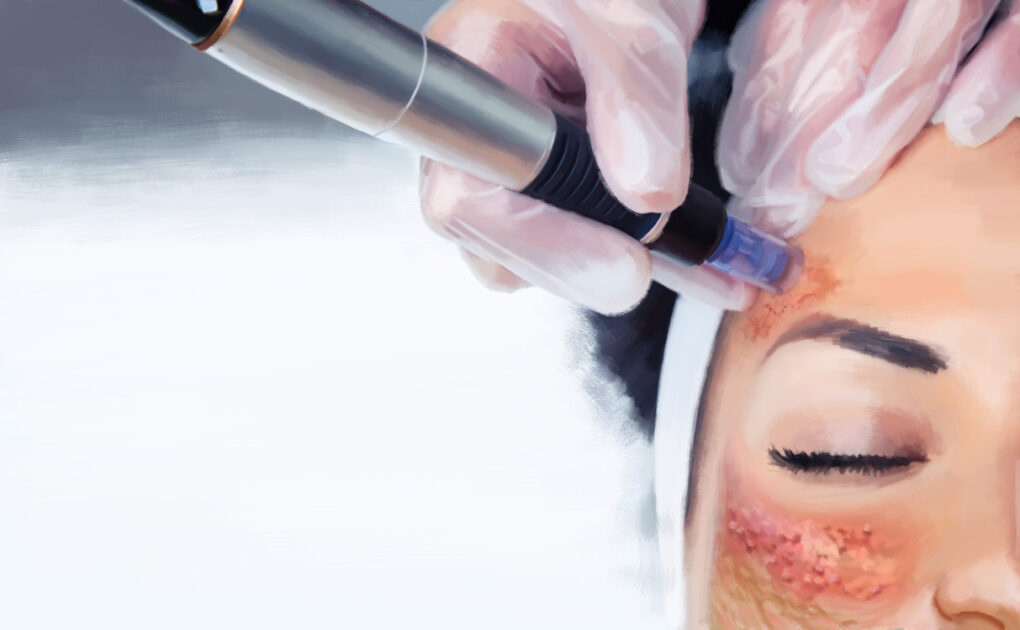Microneedling May Improve Indented Acne Scars. But Warning: Never Try Microneedling on Active Acne.

The Essential Info
Microneedling is a procedure in which short, ultra-thin needles are inserted into the skin. Most often, the needles are on a roller that looks like a lint roller, and a medical provider rolls the device across the skin while applying light pressure.
The goal of microneedling is to trigger the skin healing process in the hopes of achieving smoother skin.
Microneedling devices are available for at-home use, but it’s best to have a medical or skincare professional perform the procedure.
Never Perform Microneedling on Skin with Active Acne: If you have any active acne lesions, do not try microneedling.
Microneedling for acne scars: Multiple studies have found that microneedling performed by a professional can improve the appearance of indented (atrophic) acne scars. Two to twelve treatment sessions spread out over several months may be necessary to see results. Temporary side effects may include skin redness, itching, and mild pain.
Caution for those with non-Caucasian/darker skin: Three Indian patients with darker skin developed a “tram track” pattern of scarring after undergoing microneedling for acne scars. More research is needed to determine whether this complication has anything to do with skin color and/or ethnicity. For now, if you have non-Caucasian or darker skin and want to try microneedling, be extra careful about choosing an experienced professional.

The Science
- What Is Microneedling?
- Microneedling Is Not an Option for Treating Acne but Can Help with Acne Scars
- Studies on the Efficacy of Microneedling for Acne Scars
- Side Effects of Microneedling
- Cost of Microneedling
- The Bottom Line
What Is Microneedling?
Microneedling is a dermatological and cosmetic procedure in which a roller with thin needles on it is rolled across the skin to create a very small, controlled injury. The injury triggers the skin’s natural healing response, ideally resulting in smoother skin. Unlike acupuncture, in which a practitioner gently places long needles in traditional locations around the body, microneedling uses very short needles that go directly into the skin to be treated.
Microneedling devices come in many shapes and sizes. Some of the most popular are dermarollers, which look like lint rollers with short spikes. The needles on a dermaroller can vary in length from 0.2 mm (about the width of a hair) to 1.5 mm (still less than 1/10 of an inch). 3
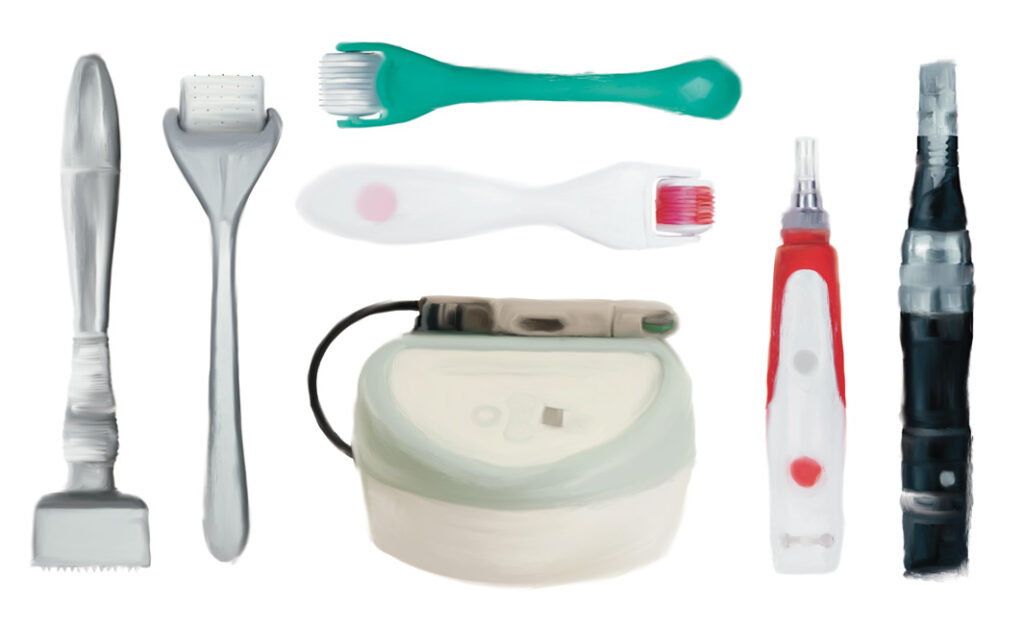
Microneedling works by stimulating the skin to produce collagen and elastin, which are essential building blocks of the skin, as well as growth factors (substances that trigger new skin growth). This helps to repair and rebuild scarred skin. Microneedling can also open up skin pores, which can be helpful for absorbing topical medications.1
The length of the needles determines how deep into the skin the needles penetrate. When it comes to acne scars, needles are typically 1.5 mm (1500 μm) or shorter.
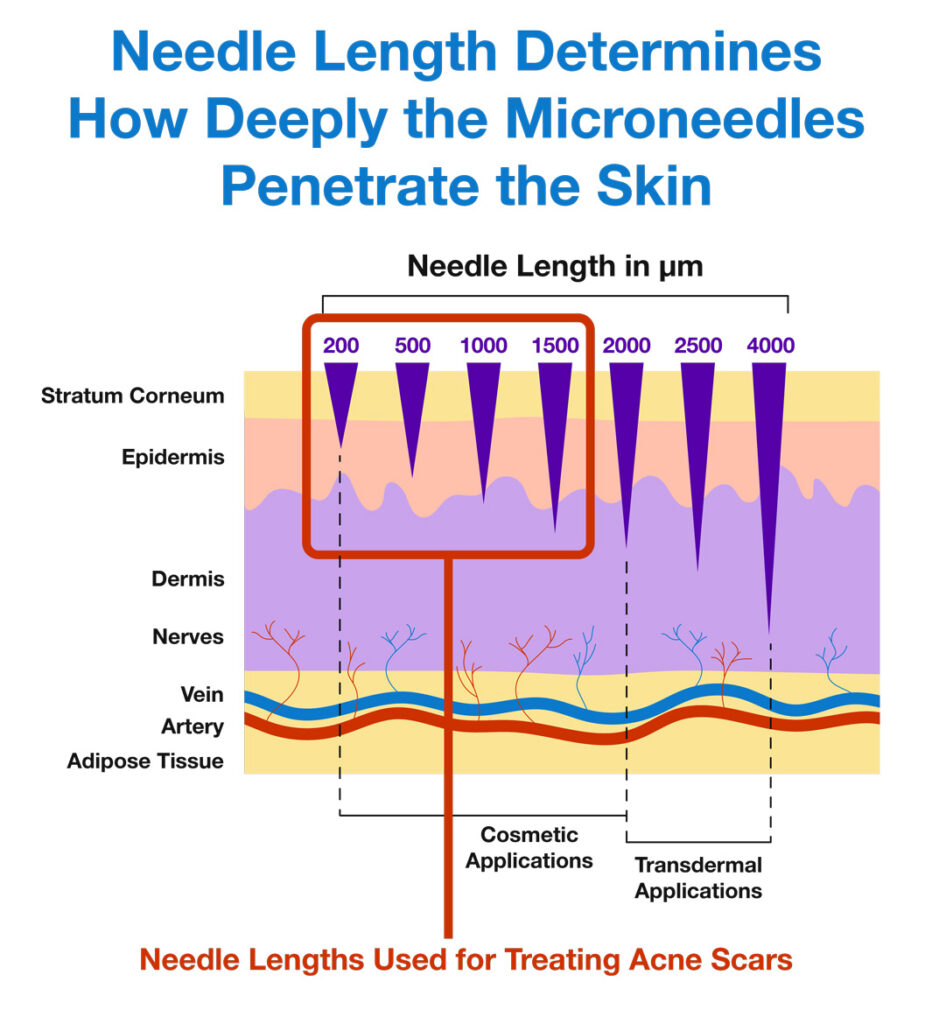
Microneedling Is Not an Option for Treating Acne but Can Help with Acne Scars
Acne: People with active acne–in other words, those who have some acne lesions right now–absolutely cannot undergo microneedling. No medical professional will perform microneedling on someone with active acne. If your skin is not clear, under no circumstances should you try microneedling at home.
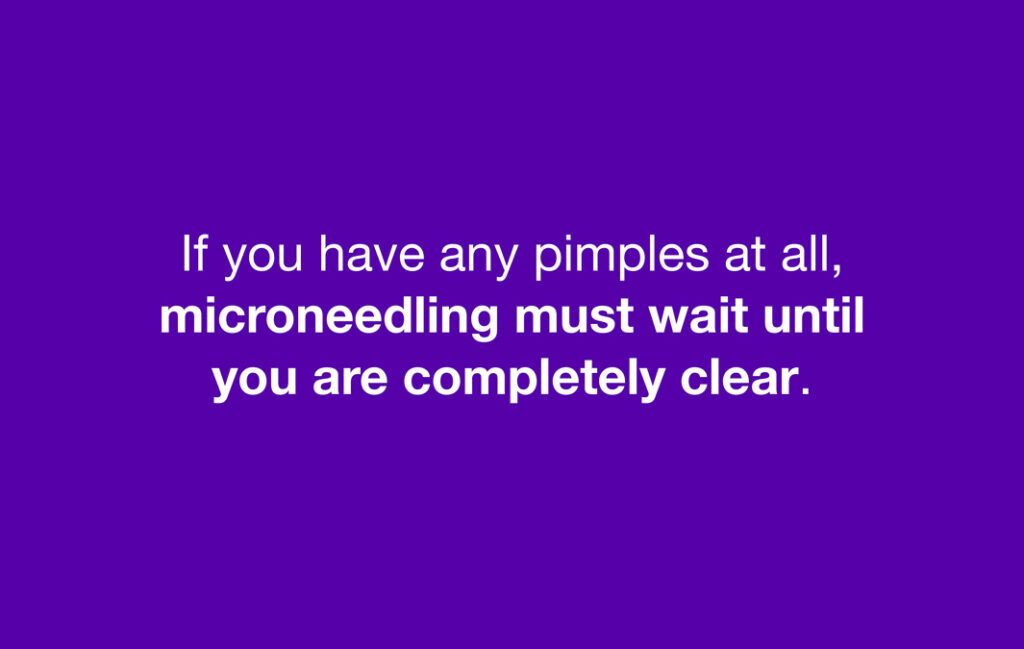
Acne scars: We do have some evidence that microneedling is helpful for reducing indented (atrophic) acne scars. Most of these studies used 1.5-mm-long needles, which are on the longer end of the spectrum. Note that although you can buy dermarollers with 1.5-mm needles, it’s best to make an appointment with a microneedling professional, because the risk of complications increases with needle length. Let’s take a look at the studies.
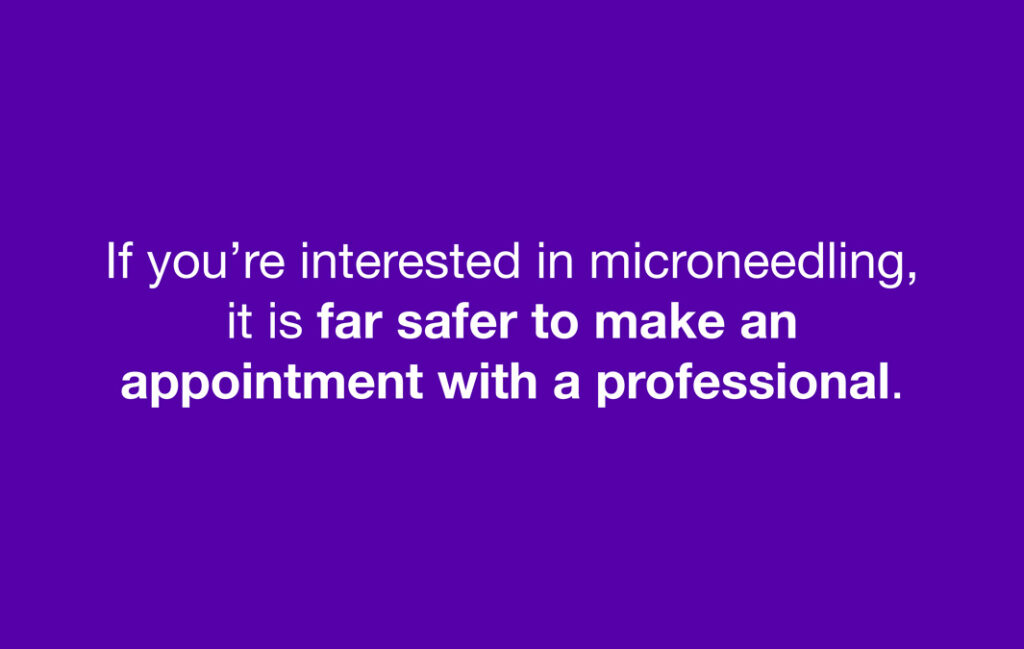
Studies on the Efficacy of Microneedling for Acne Scars
Six studies have tested microneedling on a grand total of 168 patients with acne scars.2-7 The studies used a variety of treatment schedules, with different numbers of sessions and different amounts of time between sessions:
- Number of sessions: 2 to 12
- Intervals between sessions: 1 week to 2 months
The studies measured the efficacy of microneedling in different ways:
- Three studies reported improvement as a percentage and found that microneedling improved scars’ appearance by 45% or more.2,3,7 In other words, the patients’ acne scars looked only half as numerous or severe as they had before treatment. In these three studies, patients received 5, 6, or 12 microneedling sessions, respectively.
- One study graded scars on a scale of 1-4, with higher numbers meaning more severe scarring. In this study, all patients’ scars went down by at least one grade after treatment. For those who started with more severe scarring (grades 3 or 4), 70% went down by two grades. In this study, patients received 4 microneedling sessions.6
- Two studies simply reported that microneedling significantly improved scar appearance without giving numbers. In one study, patients received 2 microneedling sessions, and in the other, 3 microneedling sessions.4,5
The table below summarizes the methods and results of these six studies.2-7
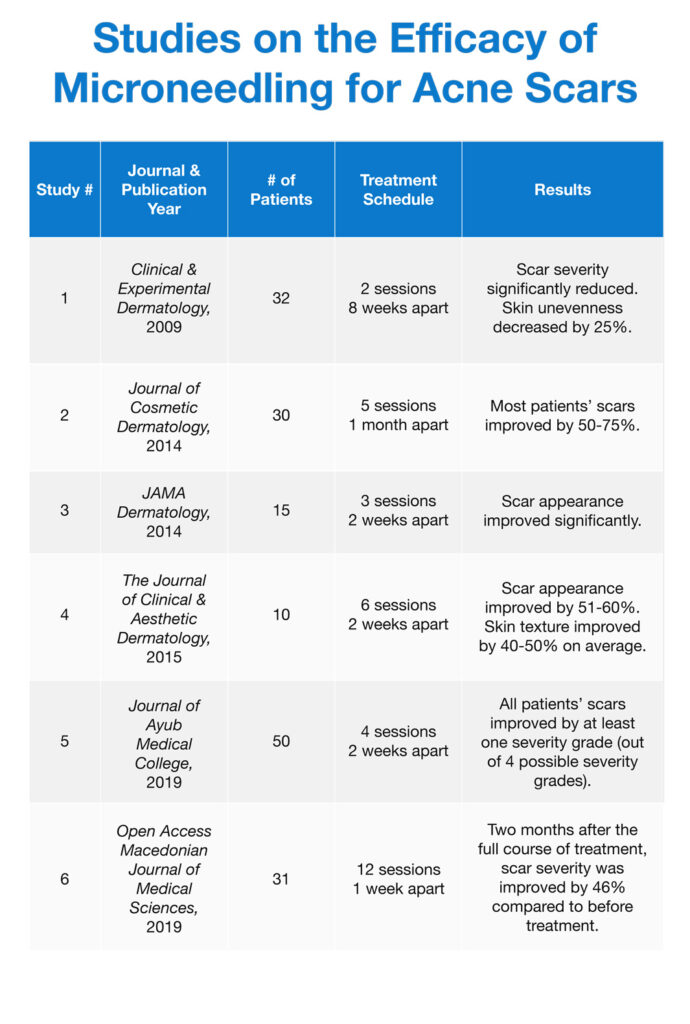
According to the 2019 study published in the Open Access Macedonian Journal of Medical Sciences, “Skin needling is an effective and safe method for the treatment of atrophic acne scars.”7 We should note that since each study included 50 or fewer participants, larger studies are necessary for microneedling to become widely accepted as a standard scar treatment.
Expand to read details of studies
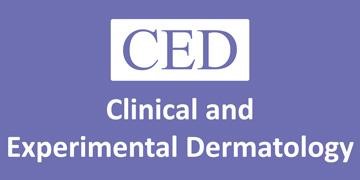
The first study was published in the journal Clinical and Experimental Dermatology in 2009. The researchers treated 32 patients with rolling acne scars (a type of indented scar that makes the skin look wavy) with microneedling using 96 needles 1.5 mm in length. The patients received two sessions of microneedling spaced 8 weeks apart.
The researchers took photos of each patient’s scars before and after the treatment and assigned the scars a severity score. They also made silicone casts of five patients’ skin before and after treatment to better measure the unevenness of the skin surface. Two months after the second treatment, the scar severity scores were significantly reduced. Skin unevenness decreased by an average of 25%. The researchers wrote, “[A]fter only two sessions, the severity grade of rolling scars in all patients was greatly reduced and there was an overall aesthetic improvement.”4

The second study was published in the Journal of Cosmetic Dermatology in 2014. The researchers performed microneedling on 30 Indian patients with acne scars. Using a system that ranks skin darkness on a scale of 1-6, these patients had skin types 4 and 5, which means their skin was medium to dark. This detail may be important because people with darker skin might be more prone to particular side effects.
The researchers used a dermaroller with 1.5-mm long needles and treated the patients in 5 microneedling sessions spaced one month apart. They rated the scars before and after treatment on a scale of 1 to 18, with 18 being the most severe. One month after the full course of treatment, the average scar score was 6.5, compared to 11.7 before starting treatment. The researchers also compared before and after photos and concluded that most patients’ scars had improved by 50-75%.
When it comes to side effects, 40% of patients experienced mild side effects. However, 5 patients developed skin darkening (hyperpigmentation), which tends to be more common in people with darker skin. In addition, 2 patients developed a “tram track” pattern of scarring. The researchers speculated that this may have had to do with the length of the needles or excessive pressure used during the procedure.2
“Tram track” scarring in an Indian patient after microneedling.2
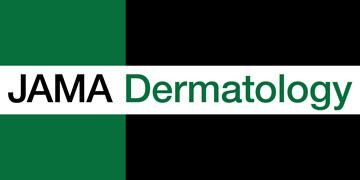
The third study was published in JAMA Dermatology in 2014. The researchers treated 15 patients with acne scars in a so-called split-face clinical trial. This means that for each patient, one randomly chosen side of the face received the microneedling treatment, while the other side of the face remained untreated as a control. The patients underwent 3 microneedling treatments spaced two weeks apart.
Six months after the start of treatment, the patients returned for a follow-up. Two dermatologists compared digital photos taken before and after treatment to evaluate any improvement in acne scars. The rated the patients’ acne scars after microneedling as significantly improved compared to before the treatment. In contrast, the untreated side showed no improvement in scars. The researchers wrote, “After 3 needling treatments, there was improvement in the appearance of acne scars over time compared with the control group, with minimal pain reported.”5

The fourth study was published in The Journal of Clinical and Aesthetic Dermatology in 2015. This study tested microneedling on 10 patients with indented acne scars. The patients received 6 microneedling treatments spaced 2 weeks apart. The researchers used a dermaroller with 192 1.5-mm long needles.
After the full course of treatment, the patients themselves as well as two dermatologists and two independent observers rated the amount of improvement in the patient’s acne scars.
All ten patients showed a 51-60% improvement in scar appearance after the full course of treatment. In addition, skin texture improved by 40-50% on average. The patients reported a high level of satisfaction with the treatment.3

The fifth study was published in the Journal of Ayub Medical College in 2019. Fifty patients with acne scars received 4 sessions of microneedling spaced 2 weeks apart. To rate the scars’ severity before and after the treatment, the researchers used a 4-point scale in which scars are rated 1 (mild) to 4 (severe).6
The researchers reported the following results:
- Among patients who started out with grade 4 scars:
- 73% improved to grade 2
- 27% improved to grade 3
- Among patients who started out with grade 3 scars:
- 70% improved to grade 1
- 30% improved to grade 2
- Among patients who started out with grade 2 scars:
- 100% improved to grade 16
A patient with grade 3 acne scars before (left) and after (right) the full course of microneedling treatment. The scars were assessed as grade 1 after treatment.6

The sixth study was published in the Open Access Macedonian Journal of Medical Sciences in 2019. This study treated 31 patients with indented acne scars with microneedling. The patients received dermaroller treatment every week for a period of 3 months. The researchers graded each patient’s scars on a scale of 1 (mild) to 4 (severe).
Before the treatments, the patients’ average scar severity score was 3.29. At the time of the last treatment, the average scar score was 2.23, and it dropped further to 1.77 two months after the full course of treatment.7
Expand to see a study on microneedling combined with other scar treatments

A study published in the Journal of Cutaneous and Aesthetic Surgery in 2014 compared the efficacy of two combination treatments:
- Microneedling + platelet-rich plasma (a procedure in which a portion of the patient’s own blood, which contains growth factors, is applied to the face)
- Microneedling + vitamin C
The researchers treated 27 patients, using the first combination treatment on one side of each patient’s face and the other combination treatment on the other side of the face. They graded the patients’ scars on a severity scale from 1 (mild) to 4 (severe).
The scientists found that with both combination treatments, 23 out of 27 patients saw an improvement in scarring by at least one grade. However, only 18.5% achieved “excellent” results with the first combination treatment and only 7% with the second combination treatment. In other words, the microneedling and platelet-rich plasma combination was more effective at treating acne scars.8
Side Effects of Microneedling
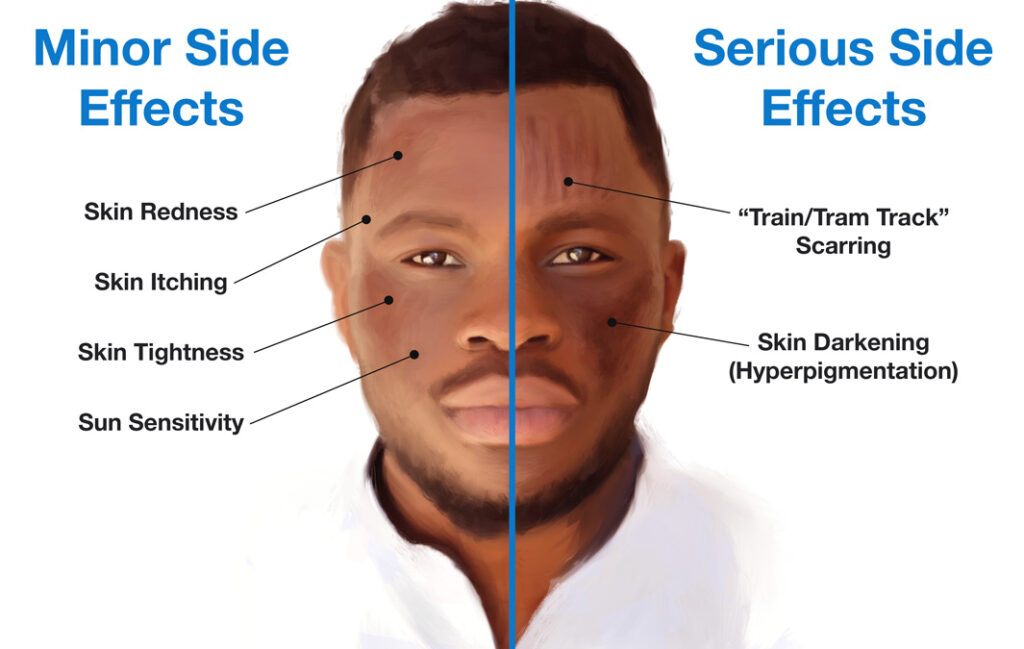
Minor side effects: The most common side effects of microneedling are:
- Skin redness: Redness may last 2-3 days after treatment.
- Skin itching: Itching typically disappears in 12-24 hours after treatment.
- Skin tightness: This sensation also typically disappears in 12-24 hours after treatment.
- Sun sensitivity: Doctors recommend that patients undergoing microneedling wear broad-spectrum sunscreen when spending long periods outside.9
Pain, if any, is minimal during microneedling. For example, one study noted that the patients rated pain from microneedling as 1 on a scale of 1 – 10.5
Serious side effects: Only one of the six studies discussed above reported serious side effects:
- Skin darkening (hyperpigmentation): 5 patients (16%) in the Indian study developed transient hyperpigmentation after microneedling.2 Skin darkening tends to affect darker-skinned individuals more often than lighter-skinned individuals.
- “Train track” scarring: 2 patients (6%) in the Indian study developed a “train track” pattern of scarring.2 The same side effect also occurred in another Indian patient described in a case report. It is unclear whether this concerning side effect had anything to do with skin color or ethnicity or was due to improper procedure during the treatment.10,11
Cost of Microneedling
Microneedling performed by a professional can cost anywhere from $100 to $700 a session.13 Since multiple sessions are usually necessary to see results, the cost can quickly add up.
Although microneedling devices can be purchased relatively cheaply for at-home use, it’s best to undergo microneedling at a medical or cosmetology office to minimize complications.
Types of Microneedling Devices: The Full Scoop
The needles in microneedling devices can be made from a variety of materials. These include:
- Polymers
- Metals
- Glass
- Silicon
- Ceramics
When it comes to their structure and how they work, microneedles come in the following types:
- Solid: These microneedles simply poke tiny holes or channels in the skin. This is the type of needles used for treating acne scars.
- Coated: These microneedles are covered in a medicated cream, gel, or solution that enters the skin together with the needles.
- Hollow: These microneedles are filled with a medication that they release into the skin.
- Dissolving: These microneedles dissolve over time, releasing a drug gradually into the skin.2,13
Different types of microneedles can help medications penetrate the skin. Medications delivered in this way can include pain relievers as well as other topical drugs.13
Other Conditions Treated with Microneedling
Besides acne scars, dermatologists and cosmetologists use microneedling to treat other skin conditions, such as:
- Non-acne scars
- Stretch marks
- Hair loss (alopecia)
- Excessive sweating (hyperhidrosis)
- Wrinkles1,13,14
The Bottom Line
While there is some evidence showing that microneedling can improve acne scars, it is important to remember that many other scar treatments are available. Each treatment has its pros and cons, and best results often come from combining several different scar treatments.15 Therefore, take your time, research your options, and talk to your dermatologist about the best strategy for treating your acne scars.
References
- Litchman, G., Nair, P. A., Badri, T. et al. Microneedling. [Updated 2020 Sep 27]. In: StatPearls [Internet]. Treasure Island (FL): StatPearls Publishing; 2020 Jan-. Available from: https://www.ncbi.nlm.nih.gov/books/NBK459344/
- Dogra, S., Yadav, S. & Sarangal, R. Microneedling for acne scars in Asian skin type: an effective low cost treatment modality. J. Cosmet. Dermatol. 13, 180-187 (2014). https://pubmed.ncbi.nlm.nih.gov/25196684/
- El-Domyati, M., Barakat, M., Awad, S., Medhat, W., El-Fakahany, H. & Farag, H. Microneedling therapy for atrophic acne scars: An objective evaluation. J Clin Aesthet Dermatol. 8, 36-42 (2015). https://pubmed.ncbi.nlm.nih.gov/26203319/
- Fabbrocini, G., Fardella, N., Monfrecola, A., Proietti, I. & Innocenzi, D. Acne scarring treatment using skin needling. Clin Exp Dermatol. 34, 874-879 (2009). https://pubmed.ncbi.nlm.nih.gov/19486041/
- Alam, M., Han, S., Pongprutthipan, M., Disphanurat, W., Kakar, R., Nodzenski, M., Pace, N., Kim, N., Yoo, S., Veledar, E., Poon, E. & West, D. P. Efficacy of a needling device for the treatment of acne scars: a randomized clinical trial. JAMA Dermatol. 150, 844-849 (2014). https://pubmed.ncbi.nlm.nih.gov/24919799/
- Afzal, F. F., Ahmad, S., Mehrose, M. Y., Saleem, M., Yousaf, M. A., Mujahid, A. M., Rehman, S. U. & Tarar, M. N. Efficacy of micro-needling on post acne scars. J Ayub Med Coll Abbottabad. 31, 336-339 (2019). https://pubmed.ncbi.nlm.nih.gov/31535501/
- Minh, P. P.T., Bich, D. D., Hai, V. N. T., Van, T. N., Cam, V. T., Khang, T. H., Gandolfi, M., Satolli, F., Feliciani, C., Tirant, M., Vojvodic, A. & Lotti, T. Microneedling therapy for atrophic acne scar: Effectiveness and safety in Vietnamese patients. Maced J Med Sci. 7, 293-297 (2019). https://pubmed.ncbi.nlm.nih.gov/30745984/
- Chawla, S. Split face comparative study of microneedling with PRP versus microneedling with vitamin C in treating atrophic post acne scars. J Cutan Aesthet Surg. 7, 209-212 (2014). https://pubmed.ncbi.nlm.nih.gov/25722599/
- Patil S, Patil SK. Dermaroller: simple and effective acne scar treatment. Int J Res Dermatol. 2, 46-48 (2016). https://www.ijord.com/index.php/ijord/article/download/41/20
- Cary, J. H., Li, B. S. & Maibach, H. I. Dermatotoxicology of microneedles (MNs) in man. Biomed Microdevices. 21, 66. (2019). https://pubmed.ncbi.nlm.nih.gov/31273476/
- Dermapen. Microneedling Cost Varies from Treatment Area and Condition-Dermapen; 2017. Available from: http:https://dermapen.com/microneedling-cost/
- Harris, A. G., Naidoo, C. & Murrell, D. F. Skin needling as a treatment for acne scarring: An up-to-date review of the literature. Int J Womens Dermatol. 1, 77-81 (2015). https://pubmed.ncbi.nlm.nih.gov/28491962/
- Dsouza, L., Ghate, V. M. & Lewis, S. A. Derma rollers in therapy: the transition from cosmetics to transdermal drug delivery. Biomed Microdevices. 22, 77 (2020). https://pubmed.ncbi.nlm.nih.gov/33104926/
- Jeong, S. Y., Park, J. H., Lee, Y. S., Kim, Y. S., Park, J. Y. & Kim, S. Y. The current status of clinical research involving microneedles: A systematic review. Pharmaceutics. 12, 1113 (2020). https://pubmed.ncbi.nlm.nih.gov/33228098/
- Kravvas, G. & Al-Niaimi, F. A systematic review of treatments for acne scarring. Part 1: Non-energy-based techniques. Scars Burn Heal. 3, 2059513117695312 (2017). https://pubmed.ncbi.nlm.nih.gov/29799567/
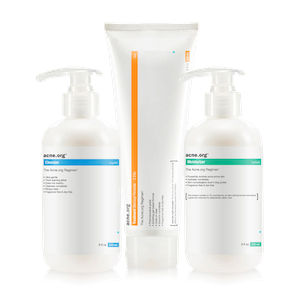 Acne.org Products
Acne.org Products